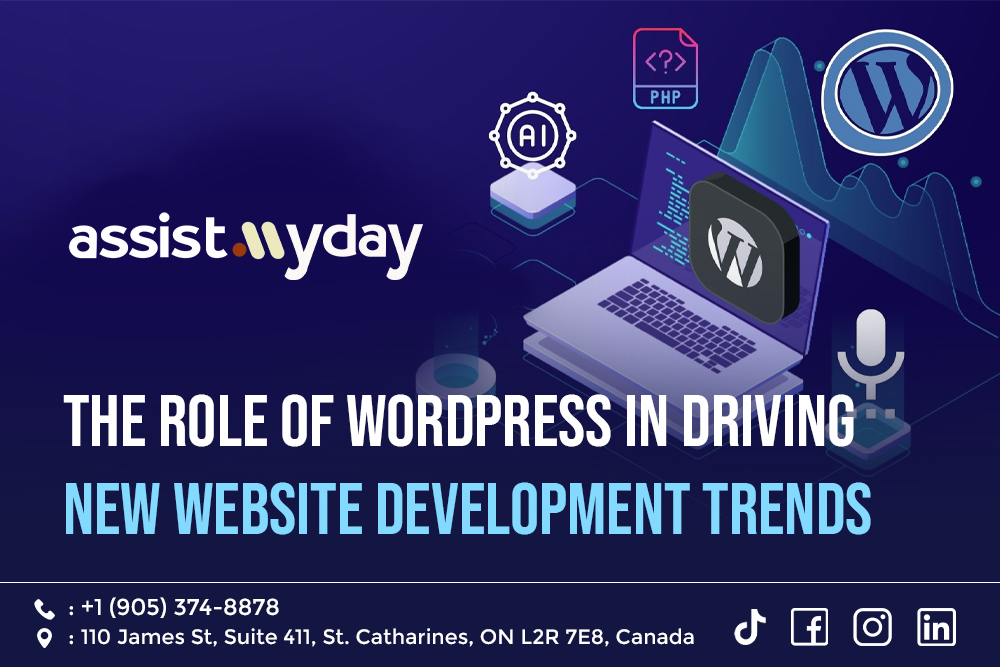Making websites that are both useful and aesthetically pleasing has become essential for both individuals and organizations in the ever changing digital arena. WordPress continues to be a prominent force among the many tools available for website construction, spurring innovation and influencing contemporary trends in website design. Let’s examine how WordPress innovates Content Management Systems (CMS), how it promotes low-code solutions, and some examples of innovative websites created with its capabilities.
How WordPress Leads in CMS Innovation
WordPress began as a straightforward blogging platform in 2003 and has now grown into a powerful content management system (CMS) that powers more than 40% of the internet. Because it is open-source, developers from all around the world contribute plugins, themes, and core upgrades, encouraging ongoing innovation.
Important developments like the Gutenberg Block Editor have completely changed the way people produce content by making it simple to drag and drop visually stunning pages. nicely addition to making the process easier for non-developers, this modular approach to content generation fits nicely with new developments in design flexibility. Furthermore, third-party tool integration has been made possible by WordPress’ REST API, allowing developers to create dynamic, feature-rich websites that are customized to meet certain requirements.
Trends Like Low-Code Solutions and Their Adoption in WordPress
The growing number of low-code and no-code platforms is one of the biggest changes in website development. By reducing the need for conventional coding, these technologies enable users to create websites with little technical know-how. These ideas have been smoothly incorporated into WordPress with features like:
- Page Builders: Plugins such as Elementor and Divi offer intuitive interfaces where users can drag and drop elements to build their WordPress website. These technologies make web design accessible to startups and small enterprises by removing the typically high learning curve.
- Pre-designed Themes and Templates: With WordPress’s thousands of editable themes and templates, users can quickly create expert websites without the need for a developer.
- Plugin Ecosystem: The vast plugin library makes it easy to add sophisticated features to any website without knowing how to code, from SEO optimization to e-commerce features.
WordPress has become more widely used across industries thanks to this low-code strategy, which serves a wide spectrum of users, from bloggers to major corporations.
Case Studies of Websites Built on Cutting-Edge WordPress Features
Here are some examples of websites that use WordPress’s sophisticated features to make a statement in order to demonstrate its capabilities:
- The Walt Disney Company
Disney’s website, which is well-known for its extensive content and heavy traffic, is a prime example of how WordPress can manage sophisticated features without sacrificing performance or user experience. Multimedia and interactive components can be seamlessly integrated with the help of custom themes and plugins. - TechCrunch
WordPress is used by this top technological news portal to handle its massive amount of material. Because of the platform’s modular design, articles can be categorized and displayed effectively, which keeps viewers interested. - BBC America
They provide a dynamic and content-rich website that effectively distributes news and entertainment across devices by leveraging WordPress’ REST API.
These websites all demonstrate how WordPress can be used to meet a variety of web development requirements while embracing the newest trends.
The Future of WordPress in Website Development
WordPress is coming up with new ideas as digital demands change. WordPress plugins are starting to include capabilities like chatbots, predictive analytics, and personalized content distribution as a result of the growth of artificial intelligence (AI) and machine learning (ML). Additionally, the platform’s dedication to accessibility guarantees that WordPress-built websites meet international standards, making them accessible to everyone.
WordPress is a key component used by marketing companies such as Assist My Day to build custom websites that meet the functional needs and branding of their clients. Businesses can remain ahead of the curve and make sure their online presence is impactful and flexible enough to adjust to changing trends by utilizing its features.
Conclusion
WordPress‘ dedication to creativity and flexibility keeps redefining web development. It is a popular option for both developers and non-technical users due to its contribution to the advancement of low-code solutions, as well as its strong plugin ecosystem and intuitive features. As time goes on, the platform’s incorporation of cutting-edge technologies should open up new avenues for website development. WordPress offers the resources and adaptability required to create a strong online presence, regardless of the size of your company.

